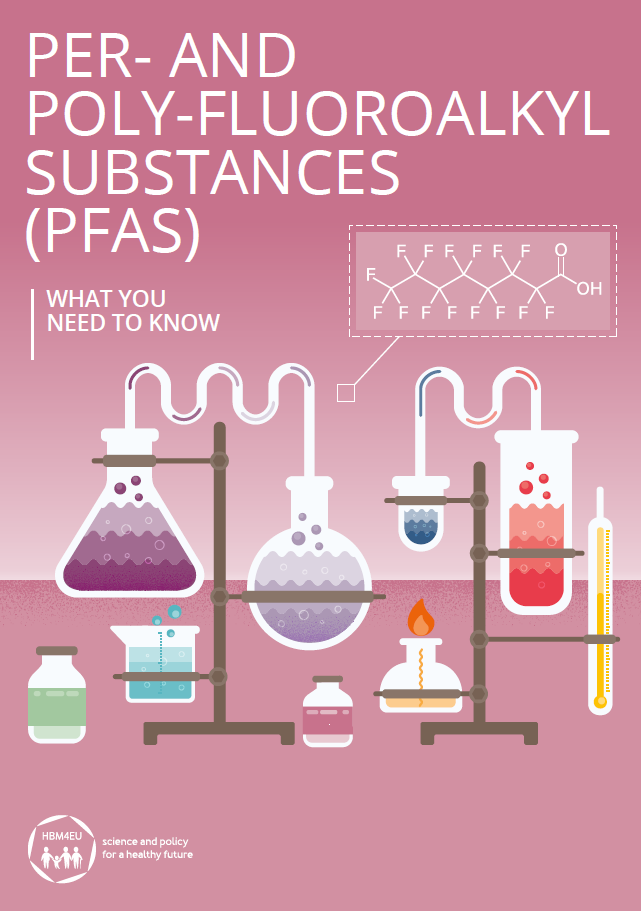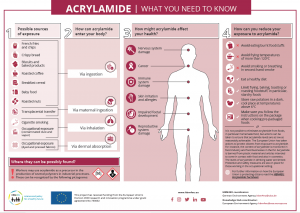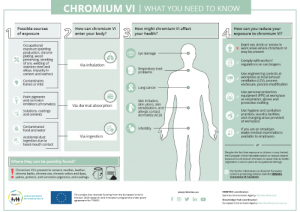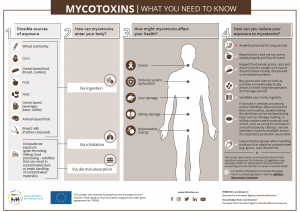
Infographics available on the citizen’s corner section
The new infographics are on bisphenol, chromium VI, phthalates, PFAS, acrylamide, mycotoxins and flame retardants.
Helping to digest the highly scientific content for non-technical audiences, such as citizens and also policy-makers, is one of our communication objectives. As part of our efforts to disseminate the scientific work and thus to enhance knowledge translation, new infographics are now available on the citizen’s corner section.
The objective of the infographics is to inform the public about the different substance groups, describe potential risks and highlighting the work of HBM4EU in understanding human exposure using human biomonitoring. At the same time, the infographics include information on the possible sources of exposure for different substance groups, describe how they can enter in our body, describe potential risk and health outcomes and provide recommendations to reduce the exposure to them.
The new infographics are on bisphenol, chromium VI, phthalates, PFAS, acrylamide, mycotoxins and flame retardants.
Example: flame retardants
How can flame retardants enter your body?
Flame retardants are released into the environment during product manufacturing, use, disposal, recycling, and in the event of a fire, when materials and products burn. They can then contaminate the air, water and soil, as well as food grown in contaminated soils. People may be exposed to flame retardants in the following ways.
- Consuming contaminated food, in particular oily fish, meat, milk and dairy products. Some flame retardants are highly persistent and build up in living organisms, thereby contaminating the food chain.
- Breastfed infants are exposed to flame retardants that have accumulated in the bodies of their mothers over time and that are then released in the mother’s breastmilk.
- Accidentally swallowing dust contaminated with flame retardants that have leached from products and furnishing in the household. Young children are more likely to swallow dust when crawling and playing on the floor.
Breathing in flame retardants released from consumer products directly into the air. Flame retardants spread through our indoor spaces as fine particles suspended in air
How might flame retardants affect health?
Growing evidence suggests that some flame retardants can affect the nervous system both pre-birth and during childhood. Polybrominated diphenyl ethers (PBDEs) have been linked to neurotoxicity through disruption of the hormone system, while polybrominated biphenyls have been linked to cancer, immunosuppression and endocrine and reproductive disorders. Both substances are now banned in the European Union.
Many different flame retardants have been used over time, implying that in their daily lives people are exposed to multiple flame retardants at once, along with a variety of other chemical substances. The effects of mixtures of flame retardants on health are not well understood.
How can you reduce your exposure to flame retardants?
If you are concerned, you can take the following steps to reduce your exposure:
- Wash your hands and those of your children frequently and in particular before eating. Hand-to-mouth contact is one of the principle ways that people swallow flame retardants.
- Keep dust levels down by:
- Mopping the floor
- vacuuming with a high efficiency particulate air filter to remove contaminated dust from your home
- keeping your home well ventilated
- Try to purchase and use products that do not contain hazardous flame retardants:
- when purchasing new upholstered furniture, look for furniture labelled as “Flame Retardant Flame free” or “free of Halogenated Flame Retardants”
- clothes labelled “keep away from fire” do not contain flame retardants
- Purchase products made from and filled with natural materials like cotton and wood, instead of polyurethane foam.
Disclaimer
The HBM4EU project was launched in 2016 with the aim of improving the collective understanding of human exposure to hazardous chemicals and developing HBM as an exposure assessment method. The project had €74m in funding and jointly implemented by 120 partners from 28 participating countries – 24 EU member states plus Norway, Switzerland, Iceland and Israel and the European Environment Agency. One of its aims was to ensure the sustainability of HBM in the EU beyond 2021. The project ended in June 2022. The website will not be updated any longer, except the page on peer reviewed publications, but will be online until 2032.





